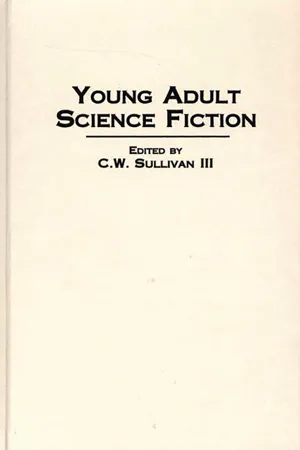
- 264 pages
- English
- PDF
- Available on iOS & Android
Young Adult Science Fiction
About this book
At the close of the nineteenth century, American youths developed a growing interest in electricity and its applications, machines, and gadgetry. When authors and publishers recognized the extent of this interest in technology, they sought to create reading materials that would meet this market need. The result was science fiction written especially for young adults. While critics tended to neglect young adult science fiction for decades, they gradually came to recognize its practical and cultural value. Science fiction inspired many young adults to study science and engineering and helped foster technological innovation. At the same time, these works also explored cultural and social concerns more commonly associated with serious literature. Nor was young adult science fiction a peculiarly American phenomenon: authors in other countries likewise wrote science fiction for young adult readers. This book examines young adult science fiction in the U.S. and several other countries and explores issues central to the genre. The first part of the book treats the larger contexts of young adult science fiction and includes chapters on its history and development. Included are discussions of science fiction for young adults in the U.S. and in Canada, Great Britain, Germany, and Australia. These chapters are written by expert contributors and chart the history of young adult science fiction from the nineteenth century to the present. The second section of the book considers topics of special interest to young adult science fiction. Some of the chapters look at particular forms and expressions of science fiction, such as films and comic books. Others treat particular topics, such as the portrayal of women in Robert Heinlein's works and representations of war in young adult science fiction. Yet another chapter studies the young adult science fiction novel as a coming-of-age story and thus helps distinguish the genre from science fiction written for adult readers. All chapters reflect current research, and the volume concludes with extensive bibliographies.
Frequently asked questions
- Essential is ideal for learners and professionals who enjoy exploring a wide range of subjects. Access the Essential Library with 800,000+ trusted titles and best-sellers across business, personal growth, and the humanities. Includes unlimited reading time and Standard Read Aloud voice.
- Complete: Perfect for advanced learners and researchers needing full, unrestricted access. Unlock 1.4M+ books across hundreds of subjects, including academic and specialized titles. The Complete Plan also includes advanced features like Premium Read Aloud and Research Assistant.
Please note we cannot support devices running on iOS 13 and Android 7 or earlier. Learn more about using the app.
Information
Table of contents
- Contents
- Preface
- Introduction: Extrapolation and the Young Adult Reader
- PART I: HISTORY AND CRITICISM
- PART II: TOPICAL APPROACHES
- PART III: BIBLIOGRAPHY
- Index
- About the Editor and Contributors